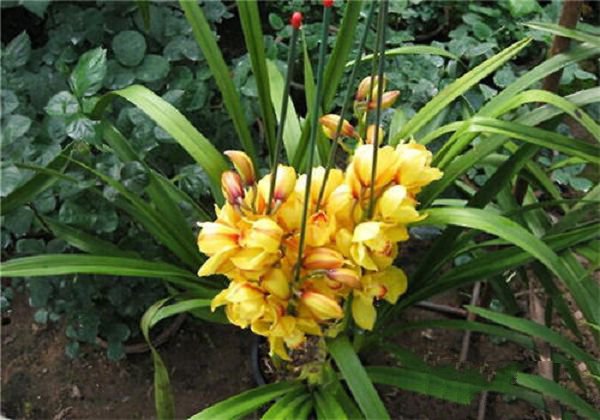Solutions to common problems in cultivating flower plants

I raised several pots of flowers and plants I like in high spirits, but unfortunately there was a problem soon after I raised them, which is really bad for inexperienced flower lovers. If they don't care, then the flowers will inevitably be malnourished or even withered and die. In fact, the problem is not terrible, terrible is that do not know the reason, do not know the solution, then what problems are often encountered in the family flower cultivation?
I. deficiency of trace elements in flowers and plants
When flowers and plants are short of nitrogen, the leaves of the plants are yellow or even dry, the leaves are small and the plants are thin. The stem is thin and broken, and the number of flowers is rare.
When flowers and plants are deficient in phosphorus, the leaves are dark green and their growth is delayed. The lower leaves are yellowed between veins, often purplish, especially on the petiole, the leaves are caducous. The flower is small and few, the flower color is not good, the fruit development is poor.
When flowers and plants are deficient in potassium, there are disease spots in the lower leaves, and dead parts often appear at the tip and edge of the leaves. The yellowing part extends from the edge to the middle, and then the edge part turns brown and shrinks downward, and finally the lower leaves and old leaves fall off.
When the flowers and plants are deficient in magnesium, the lower leaves yellowing, withered spots often appear in the late stage, yellowing appears between the leaf veins, the leaf veins are still green, and the leaf edges are wrinkled upward or downward, and withered spots often appear between the leaf veins in one day.
When flowers and plants are deficient in calcium, the tips and edges of young leaves are rotten, and the tips of young leaves often form hooks. The root system died before the above-mentioned diseases appeared. Terminal buds usually die.
When flowers and plants are iron deficient, the disease occurs in new leaves, yellowing between the veins, and the veins remain green. Plaques don't appear very often. In severe cases, the leaf margin and leaf tip are dry and sometimes expand inward, forming a larger area, and only the larger leaf veins remain green.
When flowers and plants are deficient in manganese, the disease occurs in the new leaves, the disease spots usually appear and are distributed on the whole leaf surface, and the very fine leaf veins remain green and form a fine network. The flowers are small and bad in color.
Orchid
Second, the reasons why flowers and plants do not bloom.
1. Excessive or insufficient water and fertilizer
During the period of flower growth, excessive water and fertilizer can easily lead to excessive growth of branches and leaves, nutrients are mostly used on the roots, stems and leaves of vegetative organs, while the lack of nutrients in flowers, fruits or seeds affects the formation of flower buds, resulting in no flowering or little flowering. Excessive fertilization and watering during pregnancy can easily lead to falling flowers and buds. During the flower growth period, poor growth of plants with lack of fertilizer and water can easily lead to poor flowering and poor quality.
two。 The light temperature is not suitable.
Because the origin of flowers is different, so the ecological habits are different. Some like light and heat. Some like semi-shade, some like warmth and some like coolness. If their respective living conditions are not met, it is easy to cause falling flowers and buds need to be known in advance.
3. High salinity and alkali content in soil
Most flowers prefer micro-acid and neutral soil to be afraid of salt and alkali. More saline-tolerant flowers such as geranium rose also affect growth and flowering when the soil salinity exceeds 0.1% and pH exceeds ph 7.5.
4. Non-shaping and pruning during growing period
Non-pruning during the growing period of flowers and trees not only affects beauty but also consumes a lot of nutrients and affects the formation of flower buds resulting in non-flowering or less flowering.
5. The room temperature is too high in winter
If the room temperature is too high to affect the dormancy of flowers and trees or make them sprout and draw leaves too early to consume nutrients, the annual growth is weak or the flowers are small or withered.
6. Be attacked by diseases and insect pests
During the growth period of flowers, it is easy to be harmed by diseases and insect pests, affecting nutrient accumulation and growth, resulting in falling flowers and buds.
In view of the above reasons, reasonable watering and fertilization, adjusting the growth environment of potted flowers, reasonable pruning, and prevention and control of diseases and insect pests can solve the problems of growing flowers without blooming and falling buds.
When we grow flowers for a long time, as long as we see the slightest change in flowers and plants, we can identify the causes at a glance. Of course, to achieve this is not as difficult as imagined, as long as the heart, there is nothing unsuccessful.
Related
- What if the leaves of potted flowers turn yellow?
- Florescence Control of several Flowers
- Anti-freezing technology and post-freezing nursing technology of flowers
- What is the classification of flowers? What are the common methods of flower classification?
- Prevention and control of alkali and acid damage of flowers in courtyard
- Technology of Anti-freezing and restoring growth of Flower seedlings in greenhouse and greenhouse
- How does flower fertilization not hurt the root? Fertilization technology of flowers
- Key points of disinfection in flower greenhouse
- Several pesticides that are banned or used cautiously in flowers
- How to fertilize the flowers that watch the leaves?


